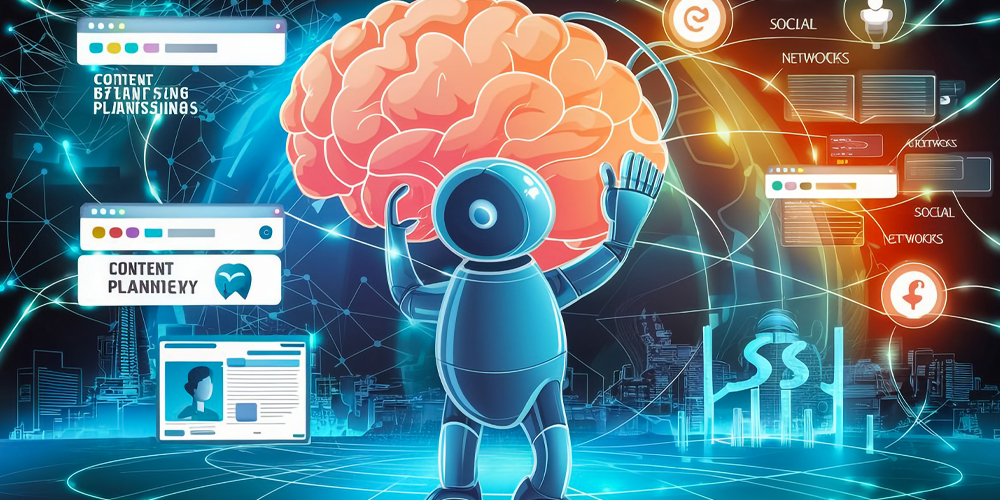Understanding Machine Learning: The Backbone of Artificial Intelligence
In recent years, machine learning has become a pivotal element in the field of artificial intelligence. This technology is transforming industries, enhancing everyday life, and driving innovation. Understanding how machine learning works and its applications is essential in today’s tech-driven world.
What is Machine Learning?
Machine learning is a subset of artificial intelligence that focuses on the development of algorithms that allow computers to learn from and make predictions based on data. Unlike traditional programming, where rules are explicitly coded, machine learning enables systems to learn from experiences.
The Importance of Data
Data is the foundation of machine learning. The more quality data a system receives, the better it can learn and adapt. This learning process involves training a model using datasets, allowing it to identify patterns and make informed decisions.

Types of Machine Learning
Machine learning can be broadly categorized into three types: supervised learning, unsupervised learning, and reinforcement learning. Each type serves different purposes and is suited for specific tasks.
Supervised Learning
In supervised learning, algorithms are trained using labeled datasets. This means that the input data is paired with the correct output. The goal is to learn a mapping from inputs to outputs, enabling the model to predict outcomes for new, unseen data.
Unsupervised Learning
Unsupervised learning deals with unlabeled data. The algorithm tries to identify patterns or groupings within the data without prior knowledge of outcomes. This type is useful for exploratory data analysis and clustering tasks.
Reinforcement Learning
Reinforcement learning is a technique where an agent learns to make decisions by taking actions in an environment to maximize cumulative rewards. This approach mimics the way humans learn from feedback and consequences.
Applications of Machine Learning
Machine learning has a wide range of applications across various sectors. Its ability to analyze large datasets quickly and accurately makes it invaluable in many fields.
Healthcare
In healthcare, machine learning algorithms assist in diagnosing diseases and predicting patient outcomes. For instance, they can analyze medical images, identify tumors, and suggest treatment plans based on historical data.
Finance
The finance industry utilizes machine learning for fraud detection, risk assessment, and algorithmic trading. By analyzing transaction patterns, algorithms can flag suspicious activities and help manage investment strategies effectively.
Retail
In retail, machine learning enhances customer experiences through personalized recommendations. Algorithms analyze customer behavior and preferences, allowing businesses to tailor their marketing strategies accordingly.
Challenges in Machine Learning
Despite its many benefits, machine learning faces several challenges. These obstacles can impact the effectiveness and reliability of algorithms.
Data Quality and Quantity
High-quality, relevant data is crucial for successful machine learning. Insufficient or biased data can lead to inaccurate predictions. Ensuring data diversity is essential for training robust models.

Overfitting and Underfitting
Overfitting occurs when a model learns noise in the training data instead of the underlying pattern. Conversely, underfitting happens when a model is too simple to capture the complexity of the data. Both issues can hinder the model’s performance.
The Future of Machine Learning
The future of machine learning is promising. As technology advances, machine learning algorithms will become more sophisticated, driving innovation in various industries.
Integration with Other Technologies
Machine learning will increasingly integrate with other technologies, such as the Internet of Things (IoT) and blockchain. This integration will enable smarter devices and more secure data management.
Ethical Considerations
As machine learning becomes more prevalent, ethical considerations will take center stage. Issues such as data privacy, algorithmic bias, and transparency need to be addressed. Establishing ethical guidelines will be crucial to ensure responsible development and application.
Conclusion
Understanding machine learning is essential in today’s world, as it forms the backbone of artificial intelligence. Its applications span various industries, driving efficiency and innovation. By recognizing the challenges and future prospects, we can better appreciate the impact of machine learning on our lives and society.





